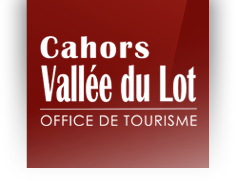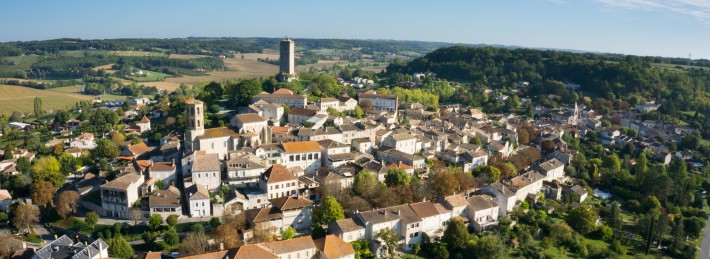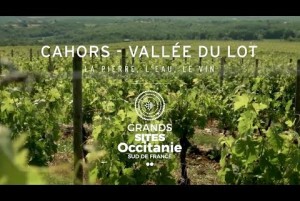Montcuq
Practical
Download the map of Montcuq here or ask for it at your arrival at the Tourist Office.
en Quercy-Blanc
Some etymology
Its fame in the media due to its name draws visitors who, once here, discover its rich history and heritage. The name of the village raises a smile and the French comedian Daniel Prévost didn’t hold back in his sketch for the television programme ‘ Le Petit Rapporteur’ in 1976 making an exaggerated play on words which everyone remembers and which has contributed to the popularity of the village not only in France but beyond.
Its name comes from the Latin ‘mons’ (mont) joined to another word, originally pre-European. ‘tuc’ or cuc’ meaning a summit.
A troubled history
Here at the end of the XIIth and beginning of the XIIIth centuries, a tower for the Counts of Toulouse was erected on the summit of a rocky mound and at the same time a small castral village was developing on the southern slope. Montcuq was under the rule of Simon de Montfort in 1212. When the earldom of Toulouse was returned to the French kingdom, the town was governed by twelve consuls sitting in the consuls’ house, now the town hall.
Below the tower, the city was enclosed by a first retaining wall, then a second surrounded by a ditch with two gates: the Cantals gate in the east and the Narcès gate to the west. Outside the gates two districts or ‘barris’ developed: the barri of Cantals where the Franciscan brothers (Cordeliers convent) settled, and the Narcès district.
On the northern side, on the banks of the Barguelonne, the Hospitaliers of Saint Jean-de-Jerusalem founded the hospital of Saint-Jean with a chapel in the XIIth century to welcome Saint-Jacques-de-Compostelle pilgrims on their way to Moissac.
Taken by the English, Montcuq was left in ruins by the Hundred Years’ War. There followed a long period of reconstruction which resulted in the building of numerous half-timbered houses.
Religious wars in their turn left their mark as Protestants burned down the church of Saint-Hilaire in 1562, and destroyed the convent of the Cordeliers and the church of Saint-Privat.
A place to stay and a stopover on the Compostela Way
Montcuq can be visited by following the signposted walk which takes you step-by-step through the medieval alleyways: buildings with geminate windows, arcaded and half-timbered facades, remarkable doors and lintels – a wealth of detail telling here and there the turbulent history of the village and describing its particular charm.
The church of Saint-Hilaire, built at the end of the XIIth century and altered in the XVIIIth century, has a group of stained-glass windows in vibrant colours tracing the lives of Christ and Saint-Hilaire.
The church of Saint-Privat which was entirely rebuilt at the end of the XIXth century, was originally built near the present cemetery, and was rebuilt in the XVIIth century and again in the XIXth century on the site of a ruined church dedicated to Saint-Blaise. There are some pieces of carved furniture from the Ancient Regime and a remarkable stained-glass window depicting the 1914-1918 war.
The GR65 brings walkers directly into the village where they can find accommodation, shops and services which make Montcuq an essential stopping point.
In the surrounding area
A short distance from the village, the lake at Saint-Sernin offers those who enjoy water the chance to participate in their favourite activity: swimming, fishing. Signposted footpaths leaving from the village take walkers across plateaux and valleys to explore the typical Quercy Blanc countryside.
4 kms from the village, the small church in Rouillac shows visitors a rare example of wall frescoes from the XIIth century classified as a historic monument.
In the chapel at Saint-Géniès situated 3 kms from Montcuq, Bertrand de Saint-Géniès, patriarch of Aquila, was baptised. The association ‘Les Amis de Bertrand de Saint-Géniès’ has organised the twinning of the village with San Giorgio della Richinvelda in Italy where Bertrand was assassinated in 1350.
Chateau Charry was built during the second half of the XVth century by a rich Montcuqois merchant and extended in the XVIIth and XVIIIth centuries. It comprises a main hall flanked at the front by two polygonal towers and two circular defensive towers at the rear. One of these was converted into a chapel in the XVIIth century, a classified historic monument; the château is private and may not be visited.
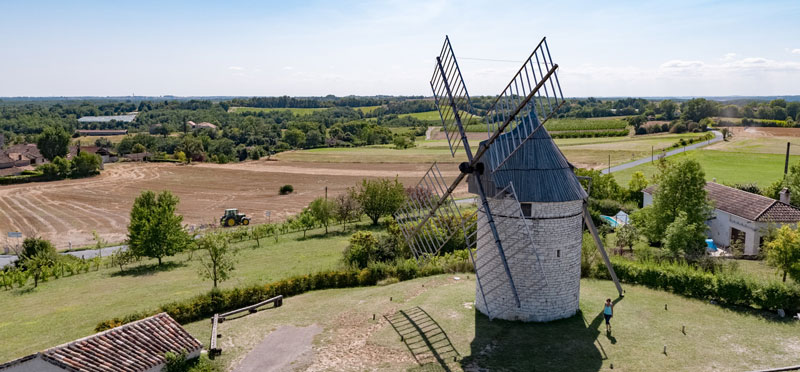
A story of landscapes and colours
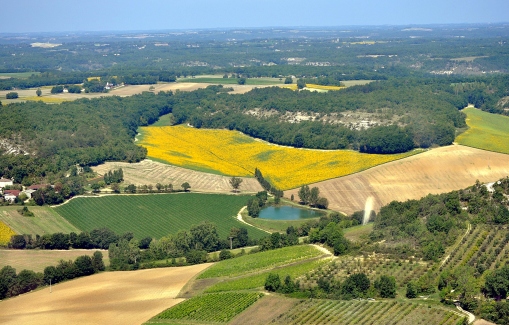
Along the paths, the emerging soil is the colour of chalk. The play of sunlight on the stone creates a very particular light. Without doubt, the Quercy Blanc is well-named.
Contrasting landscapes...
Rocky plateaux and green valleys, gentle hills and streams with melodious names, Lupte, Lendou, Barguelonne, Lemboulas, paint a picture of a harmonious countryside. This sweeping landscape and vegetation is scattered with houses, in the typical traditional architecture, all white from the colour of the building stones, with dovecotes and ochre roofs. Here and there, low dry stone walls delicately trace the boundaries of the paths and fields..
…and a palette of colours
As a result of its varied natural environment and climate, the Quercy Blanc has an exceptional wealth of flora and each season takes on a multitude of changing colours.
In spring and summer, lavender and sunflowers, broom, poppies and orchids stretch as far as the eye can see whereas autumn is coloured by the brown and orange hues of the oaks and maples as well as the vines.
HERITAGE AND ANCIENT STONES
White stone reflects the light and gives the Quercy Blanc buildings a particular character and charm. Scattered with evidence of its rich history, the heritage of this region can be discovered by chance during a walk, at the end of a path, on the summit of a hill…
ON THE TRAIL OF HISTORY
Like an heritage, the villages carry traces left by man since the Middle Ages.
Seen from afar, the XIIth century keep watches over the medieval town of Montcuq, its ramparts and narrow alleyways. Castelnau-Montratier is built on a bastide plan from the XIIIth century with its covered arcades, checker-board pattern of roads and half-timbered facades. Each village draws its heritage from more or less distant times which have left behind them remarkable features: doors, facades, staircases, bell-towers…
Some castles and residences of character are unassuming whereas in the heart of villages or isolated in a forgotten valley, crosses, churches and Romanesque chapels bear witness to the great spiritual momentum which drove medieval Quercy Blanc.
Perched on the crest of a hill, nestled in a valley, wind and watermills, some still working, are silent witnesses to a rich and prosperous past.
Some of these buildings are classed as historic monuments.
HOUSES IN WHITE STONE
White stone is a characteristic feature of Quercy Blanc buildings. The architecture of the traditional houses show typical features such as the "bolet". Very often, a dovecote is attached to a rural property. Bread ovens, wells, small barns and other outbuildings used for agriculture are often found around the main house. The gently sloping roofs of the houses are made with roman tiles.
A HIDDEN HERITAGE
At a bend in the road, at the bottom of a valley or the summit of a hill, drystone walls, springs, shepherd’s huts, wells and communal wash-houses are evidence of the builders’ skills from long ago. These buildings are the subject of protection and conservation measures undertaken by associations which maintain and restore this heritage.
